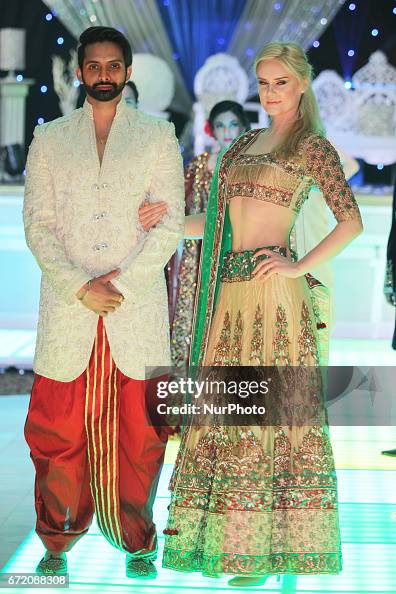Eastern Wear Pakistan: Necessary Wardrobe Parts for every single Style Enthusiast
Eastern Wear Pakistan: Necessary Wardrobe Parts for every single Style Enthusiast
Blog Article
Unlock the Tricks of Classic Eastern Wear
Exploring the enigmatic world of timeless Eastern wear looks into a world where artistry, culture, and background merge to produce garments that go beyond mere fabric and thread. The detailed tapestry of tradition intertwined with modern components offers a peek right into a globe where every stitch narrates, every motif an icon of importance. Revealing the secrets behind these creations introduces a tapestry of heritage waiting to be unraveled, welcoming one to trip with the spiritual charm and mystique of Eastern fashion.
Background of Eastern Fashion
The background of Eastern fashion days back centuries, reflecting the abundant cultural heritage and customs of diverse regions throughout Asia. Each area flaunts its one-of-a-kind styles, textiles, and styles that have been influenced by variables like climate, faith, social standing, and trade paths. eastern wear pakistan. For instance, the detailed silk garments of China represent elegance and refinement, while the vivid saris of India showcase a kaleidoscope of colors and patterns.
In Japan, the bathrobe has been a sign of custom and refinement for generations, with different styles worn for various occasions. The hanbok in Korea stands for the country's deep-rooted custom-mades and is still used during vital events. The background of Eastern style is a tapestry of innovation and tradition, blending ancient exercise with modern impacts to produce a dynamic and ever-evolving market. Understanding the origins of these famous garments offers understanding into the cultural importance and workmanship that remain to motivate modern designers worldwide.
Importance of Standard Clothing
Conventional outfit works as a cultural emblem, symbolizing the worths, beliefs, and heritage of communities in Eastern cultures. eastern wear pakistan. These garments are not just items of textile yet are symbolic representations of the rich history and traditions gave with generations. In Eastern societies, traditional outfit plays a considerable role in events, events, and life, showing the social condition, regional affiliations, and even marital standing of individuals
The value of conventional clothing surpasses looks; it is a method for people to get in touch with their roots and share satisfaction in their social identification. Each garment, from the detailed sarees of India to the flowing hanboks of Korea, carries with it a story of workmanship, symbolism, and importance that is deeply embedded in the textile of culture.
Furthermore, standard outfit acts as an aesthetic language, interacting stories of durability, unity, and victory. By putting on these garments, individuals not just honor their heritage but also contribute to the conservation and party of their cultural legacy.
Advancement of Eastern Embroideries
Eastern embroideries have an abundant history that spans centuries and have constantly evolved to integrate diverse social impacts and respond to changing artistic patterns. The development of Eastern embroideries can be mapped back to ancient civilizations where intricate designs were hand-stitched onto textiles making use of typical strategies.

Today, Eastern embroideries remain to evolve, blending typical workmanship with contemporary design perceptiveness to produce timeless pieces that celebrate the charm of multiculturalism and creative innovation.
Elegant Fabrics in Eastern Put On
Elegant fabrics play a crucial our website duty in raising the visual charm and quality of Eastern wear, boosting the total allure and class of standard garments. Eastern wear is renowned for its extravagant materials that not just reflect the region's rich cultural heritage however likewise signify style and elegance.
In addition to silk, fabrics like velvet, chiffon, and brocade are likewise commonly included in Eastern wear. These luxurious materials not only elevate the visual appeal of Eastern wear yet also guarantee a feeling of refinement and class that goes beyond time.
Incorporating Eastern Fashion Today
In contemporary fashion landscapes, the integration of Eastern influences provides a harmonious blend of social heritage and modern appearances. Developers and style lovers alike are welcoming the rich tapestry of Eastern fashion, integrating standard components right into modern-day silhouettes and designs. From detailed needlework to lively shades and glamorous fabrics, Eastern fashion today provides a diverse variety of alternatives that provide to an international audience.
One way Eastern fashion is making its mark in modern closets is through the adjustment of standard garments such as the kimono, saree, or qipao right into daily wear. These pieces, when scheduled for special events, are currently reimagined in more informal types, permitting for their consolidation right into everyday style options. In addition, making use of standard patterns and motifs in Western-style clothing adds a touch of exotic style to contemporary outfits.

Final Thought
Finally, checking out the rich background, importance, and evolution of Eastern style introduces an ingrained connection to heritage and worths. The elegant textiles and detailed needleworks of Eastern wear showcase the adaptability and timelessness of typical styles. Including Eastern influences in contemporary fashion enables a fusion of custom and technology, creating an unified equilibrium in between the past and today.
Extravagant fabrics play a pivotal duty in elevating the aesthetic charm and top quality of Eastern wear, improving the general attraction and refinement of conventional garments. Developers and fashion enthusiasts alike are embracing the rich tapestry of Eastern style, incorporating typical aspects into modern-day silhouettes and styles. From elaborate needlework to extravagant textiles and lively shades, Eastern fashion today uses a varied variety of alternatives that cater to an international target market.
One method Eastern style is making its mark in modern closets is via the adjustment of traditional garments such as the kimono, saree, or qipao right into day-to-day wear. The glamorous fabrics and elaborate needleworks of Eastern wear showcase the versatility and eternity of typical designs.
Report this page